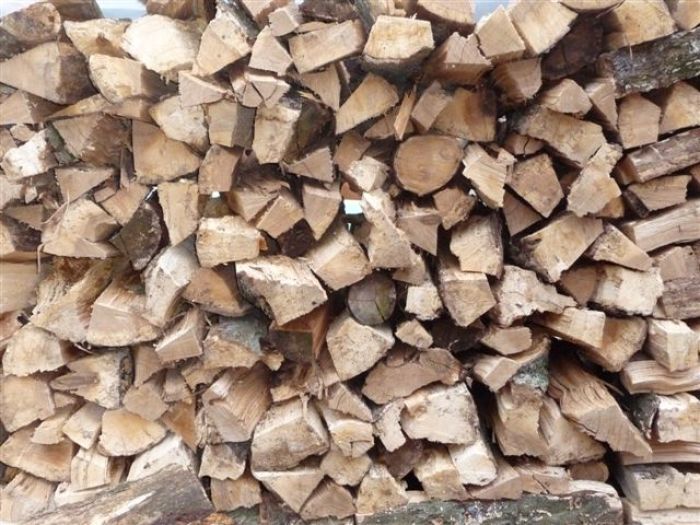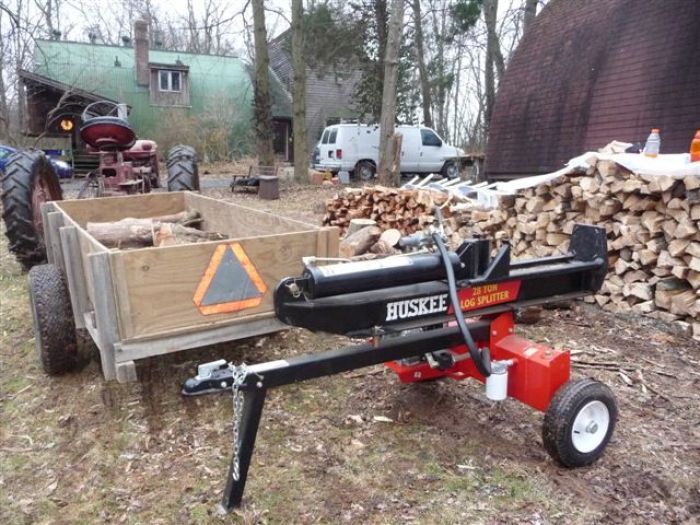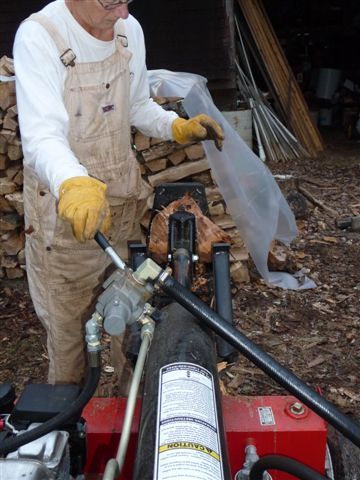
During the cold-weather months, when we can’t garden outside, there is another task for many of us that requires constant diligence: firewood. I think of cutting, gathering, loading, unloading, stacking, as well as keeping the fire in the stove going, as a kind of winter gardening. It requires about the same amount of outdoor work, as much physical labor (if not more), and allows one to be in touch with nature as well as in harmony with the cycle of the seasons. To me, these chores are physical, requiring exertion of our bodies, yet at the same time they are meditative, allowing our minds and spirits to reflect or feel what we need to as we go about the work.
“Miraculous powers and marvelous activities—drawing water and hewing wood”
—P’ang Yun, Buddhist monk, 9th century
Nearly 30 years ago, when we built our passive solar house, we were a lot younger, rather pioneer in spirit and we put in a woodstove with no back-up heat along with our solar system. The south side of the house is a greenhouse, so we get quite a lot of solar gain on a sunny day in the winter; while on a cloudy day I can feel cool air moving about. There is a tubular water wall dividing the greenhouse from the living area, although it isn’t a totally separate space. The plants don’t seem to mind that sometimes it gets pretty chilly in there.
Over the years, with small children, we added a few electric hot-water baseboard heaters. Having a woodstove as the primary source of heat is a lot of work and requires constant attention. Both of Tomaso and I know the workings of the stove well. I can sense when it needs wood by the feel of the heat coming off of it as well as the sounds it makes. Just like I know if the fire is caught—I can sense it—if I need to close the vents down and if the stovepipe is getting clogged. I am the last to go to bed at night, so I stoke the stove and turn it down to last through the night. Tomaso is first up, early in the morning, so he stokes the stove and gets it going and fills it before going to work. Besides letting the dog out, the stove gets my attention first, before I start my day.
We live surrounded by woods, so our fuel is indigenous wood, it is free except for our labor and for the gas it takes to run the chainsaw, tractor and wood splitter. If it weren’t for the latter, our carbon footprint would be minimal. Still, I feel that we are doing better than the folks down the road, living in huge homes and mindlessly turning up the thermostat. Our stove is tight and we burn dry wood. We mostly use deadfall, which is wood that is already down, has not started to rot and is a good choice, since it is already partly seasoned, which means it has dried and most of the moisture has evaporated. However, we also cut down standing dead timber, which is best since it usually has less rot and is also seasoned. Most of the wood on our property is locust, oak, cherry and maple, so we burn whatever is readily available and easiest to get to.
I am not one who likes to use or cares much for the sound of motors or power tools; I am happy to let others run the chainsaw, wood splitter, rototiller, lawnmower, etc. I know how to use them if need be, however I’d much rather weed by hand or with a hoe, or stack and carry loads of woods. Therefore, Tomaso, who spends his weekends windsurfing across the water in summer, spends his winter weekends in the woods with a chainsaw. He suits up for the weather and wears ear protectors, goes out into the woods and decides which deadfall or standing timber to cut and uses his chainsaw to cut it into stove-length size. Sometimes he does this with a buddy. Then he gets the old tractor running, hooks up the wagon and loads the wood into the wagon. Once I hear him coming up the hill, I get on my heavy clothes and work gloves and go out to help.
We unload the wagon out by the wood pile where we stack wood that needs to be seasoned. Large pieces are tossed in a pile to be split. Last year, after 30 years of splitting with an axe, we bought a wood splitter. It sure saves a lot of time, however it uses gas and makes a lot of noise. I like to stack and I enjoy building the ends of the woodpile, alternating the logs so they are stacked to support the load. I think that there is an art to it and spend extra time looking for just the right-sized logs to make it even and stable. Then we load the driest wood into the wheelbarrow and it is wheeled to the back porch. We store the seasoned wood there. Tomaso (and sometimes the girls if they are at home) stands at the bottom of the steps and tosses the logs up to me; I catch and stack. This is a good workout. From the porch, the wood is carried into the house and put in the wood box alongside the woodstove. I figure I carry in about 10 loads a day, which I carry in my arms, about three to five logs at a time. Both Tomaso and daughter Cady use the log carrier, which I find cumbersome, not to mention that I can’t lift it when it is full.
Our downstairs is open-space kitchen-living area and the hearth is truly the heart of our home. The woodstove and the heat it produces is a communal thing. We have a big table near the stove where we eat, write, compute and hang out. Everyone who enters is drawn to the stove and goes over to stand or sit by it. I heat water on it, warm bread on it, and reheat pots of soup or other leftovers. When I empty the ashes into the ash bucket, I carry it outside to cool and then I spread the potash around the garden. Wood ash is a source of potassium, which is the K part of the N-P-K that our garden soil needs. I will dig it in to nourish the garden earth, once spring rolls around.





























Comments
Log in or create an account to post a comment.
Sign up Log in